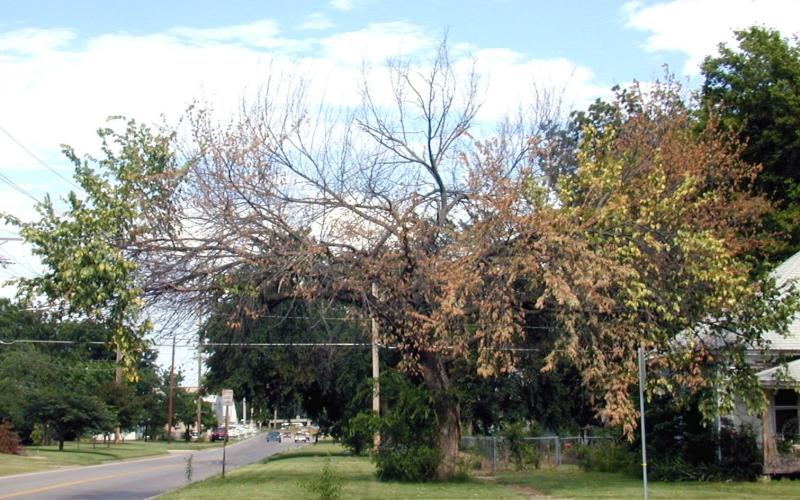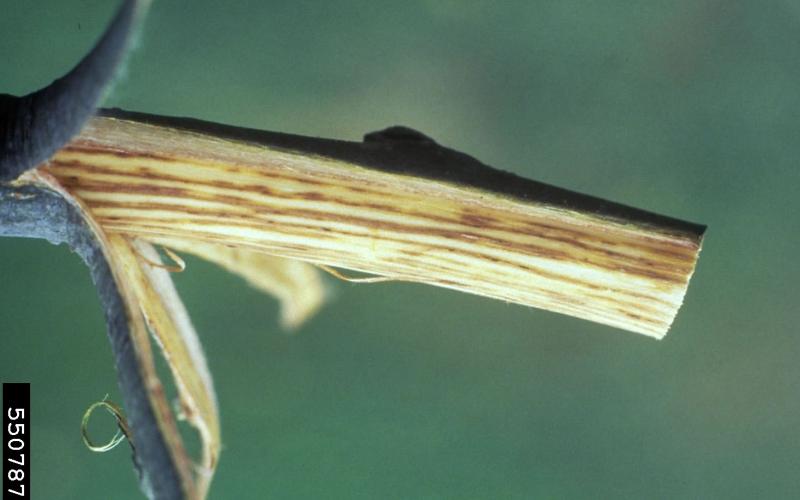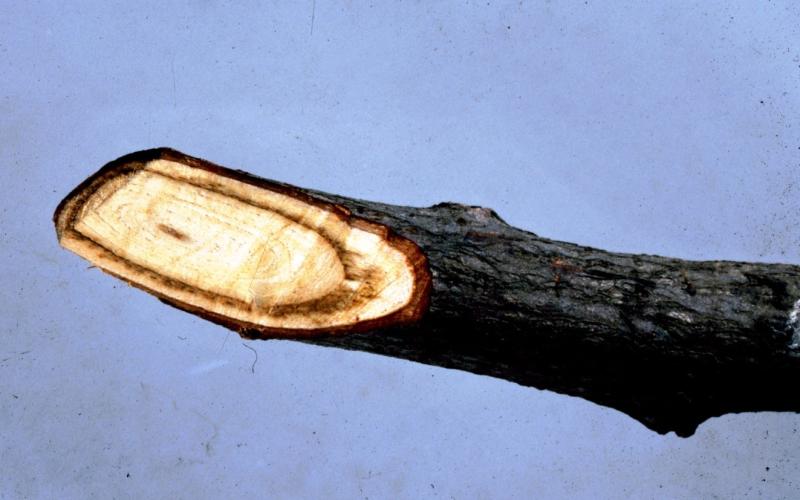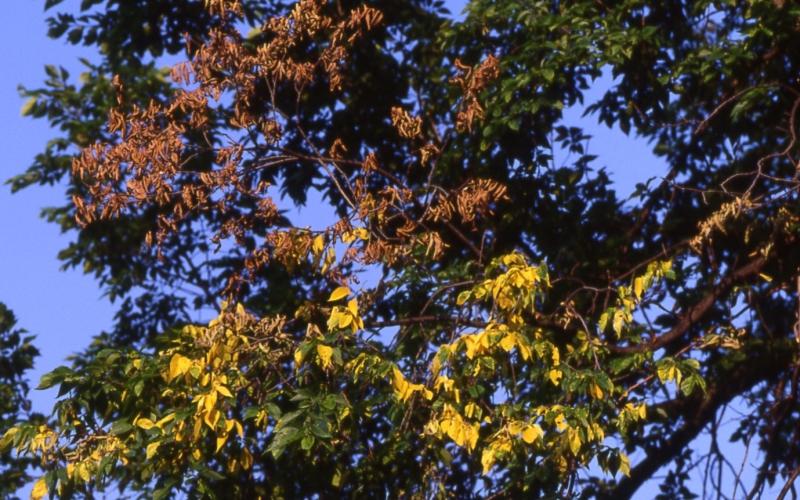Dutch Elm Disease
Scientific name: Ophiostoma ulmi and O. novo-ulmi
Native range: Europe
Regulatory Status: Locally Regulated
Some municipalities require control of elm trees infected with Dutch elm disease in order to prevent its spread to other elm trees in the municipality. Because the disease is widespread, there are no state or federal regulations related to Dutch elm disease in Minnesota.
Distribution
Dutch elm disease was first found in Minnesota in 1961 in St. Paul and is now present throughout the state. The University of Minnesota has documented the spread of Dutch elm disease in Minnesota.
Biology
Dutch elm disease is caused by the fungi Ophiostoma novo-ulmi and O. ulmi. These fungi are often spread by elm bark beetles, several species of which are found in Minnesota. When bark beetles feed on twigs and branches, the introduce the fungus into the vascular system where it spreads to other parts of the tree, including the roots. The tree tries to stop the spread of the fungus by producing plug-like structures, but these also block the flow of water and contribute to wilting. Highly susceptible trees may die within same season they are infected, while others may take several years. The fungus can also spread to adjacent elm trees through root grafts.
Identification
The first symptom of Dutch elm disease is usually a small area of yellow or brown wilting foliage called “flagging,” often beginning with a branch on the edge of the crown. The affected area expands and progresses toward the trunk. Wilted branches may show brown streaking in the sapwood, which is visible if the bark is removed. The University of Minnesota plant disease clinic can test elm samples for Dutch elm disease.
At Risk
Elm trees are still a significant part of many forests and urban landscapes. Today, communities typically plant cultivars considered resistant to Dutch elm disease.
What Can I Do?
Check and follow local regulations on removing and disposing of Dutch elm-infected trees, as well as storing elm firewood. One of the most effective ways to reduce the incidence of Dutch elm disease in urban areas is proper sanitation of infected material. Injections with fungicides can also help protect elms when the disease is spread by insect feeding.
If you suspect Dutch elm disease in Minnesota, contact the MDA via Report a Pest.





